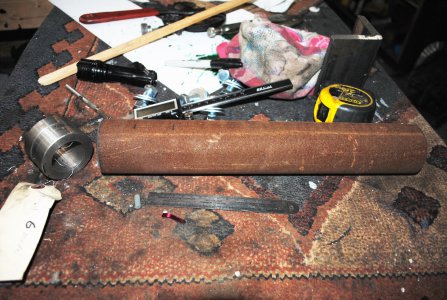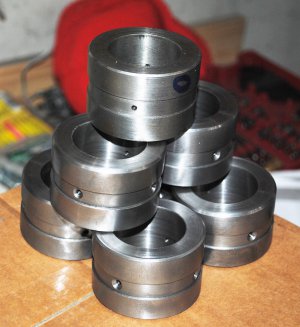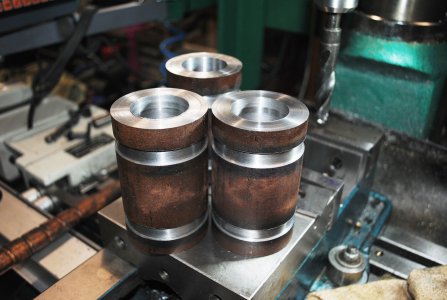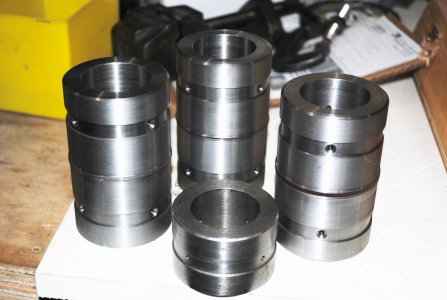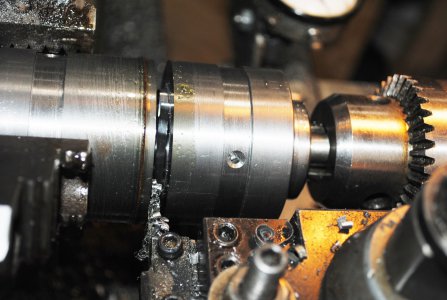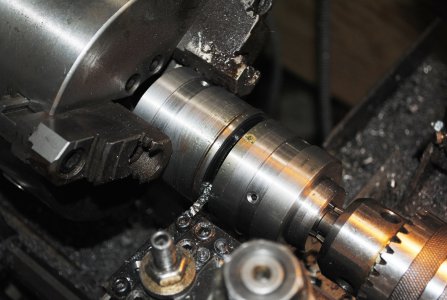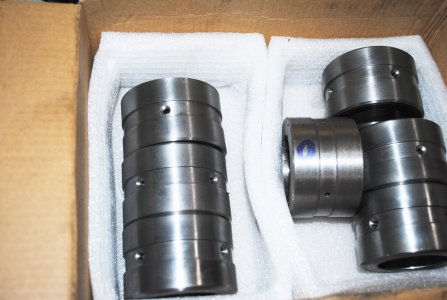- Joined
- Apr 8, 2013
- Messages
- 2,041
My friend asked me to make some parts for a machine that broke down in the middle of a paving job. When he comes to me it's an emergency and I would never even consider saying no. He needed 6 bushings and it took me 20 hours which is the reason for this thread. I have only manual lathe and mill but there's gotta be a more efficient way to do this than the way I did it. When I retired I was a house builder so I don't have the experience of working in a machine shop. He have me a sample bushing to copy but had no dimensions or tolerances as the machine was no longer made. So he handed me one leftover bushing that home made by some body and the ID was supposed to be a slip fit over something? The OD was to be a press fit into something? I had no idea what that something was. Here's some pictures of the sample and my finished bushings. The top one with the blue marker is the sample I had to copy. I'll cover my order of operations in the next post and hopefully someone can suggest improvements.

